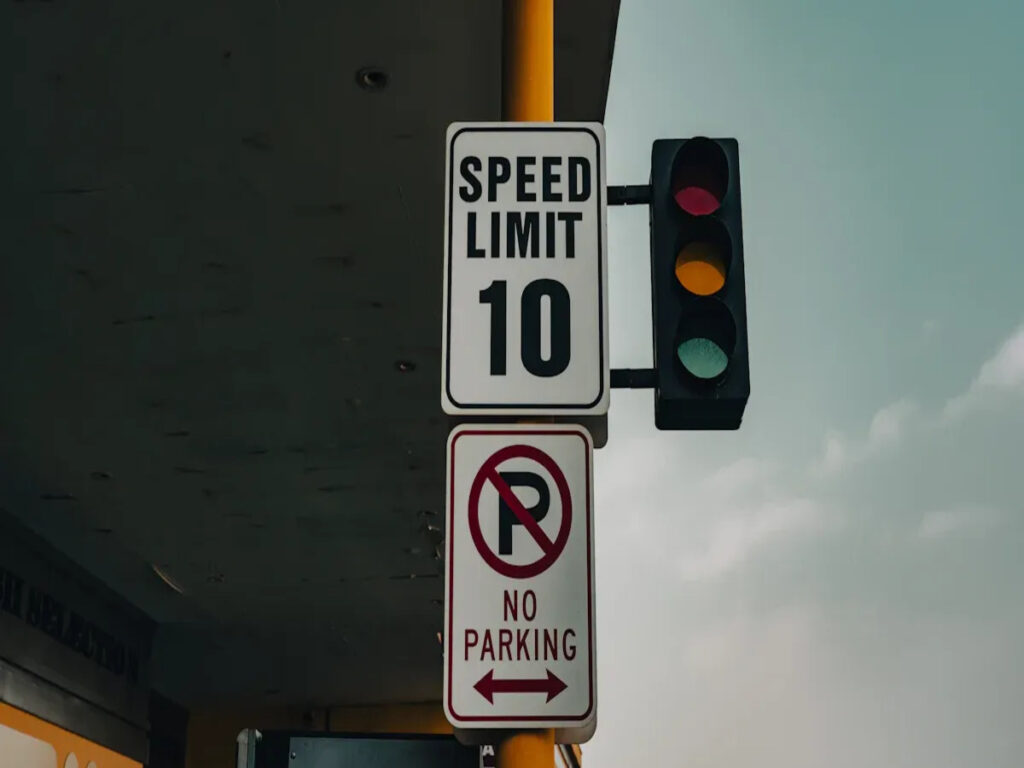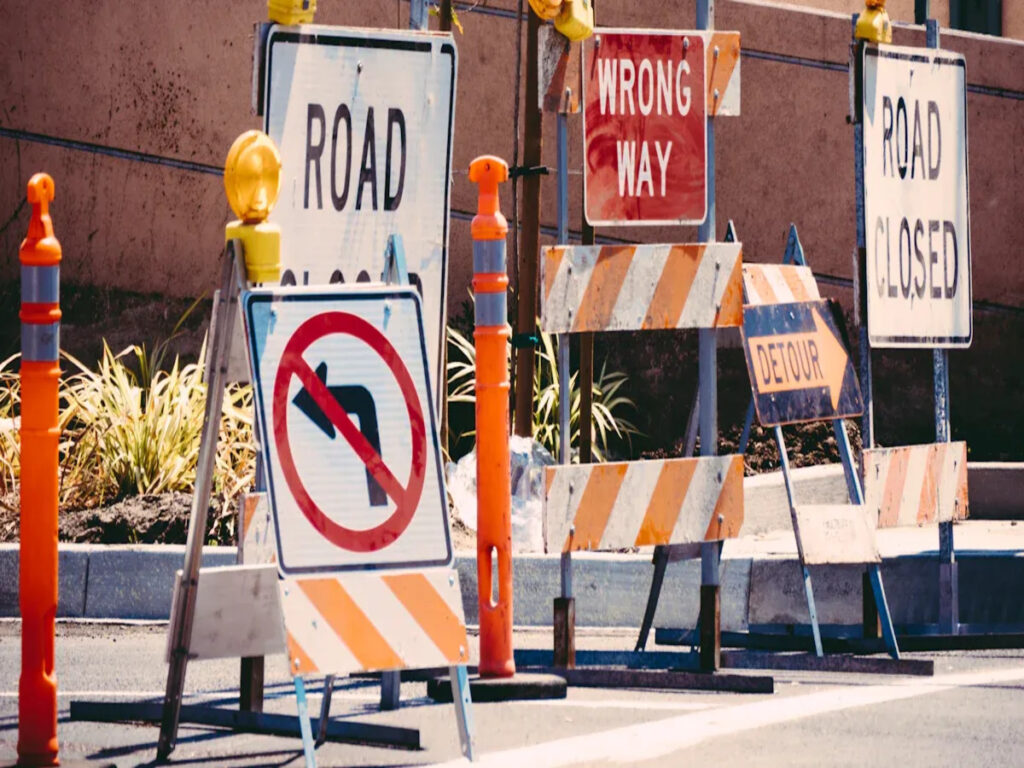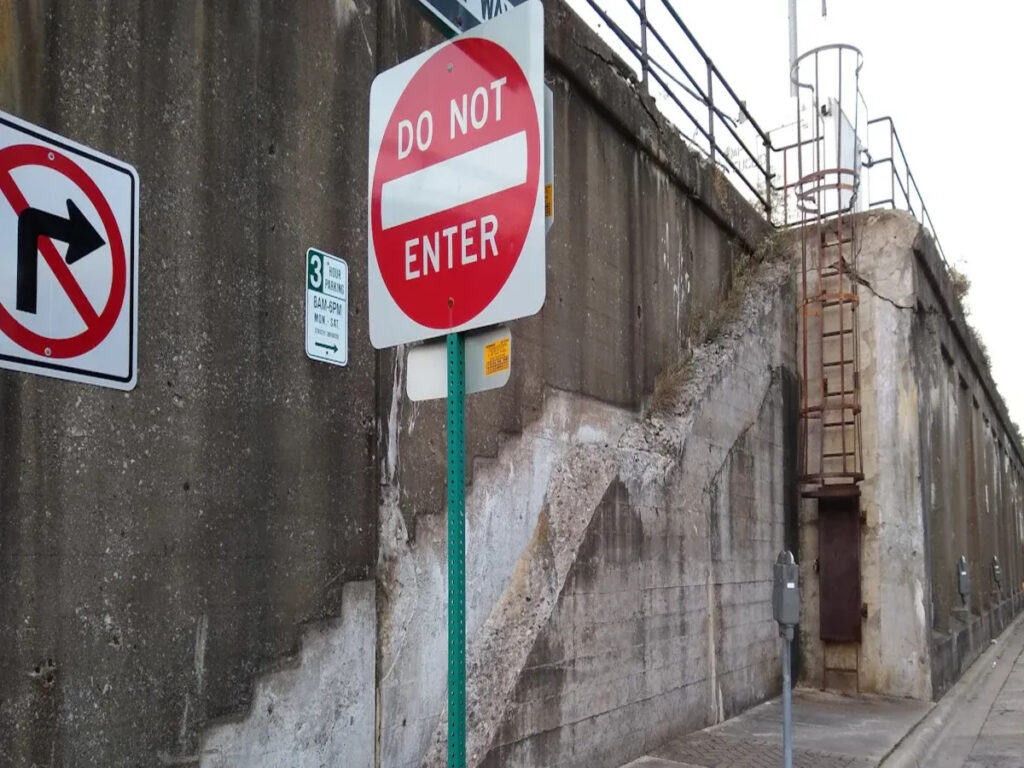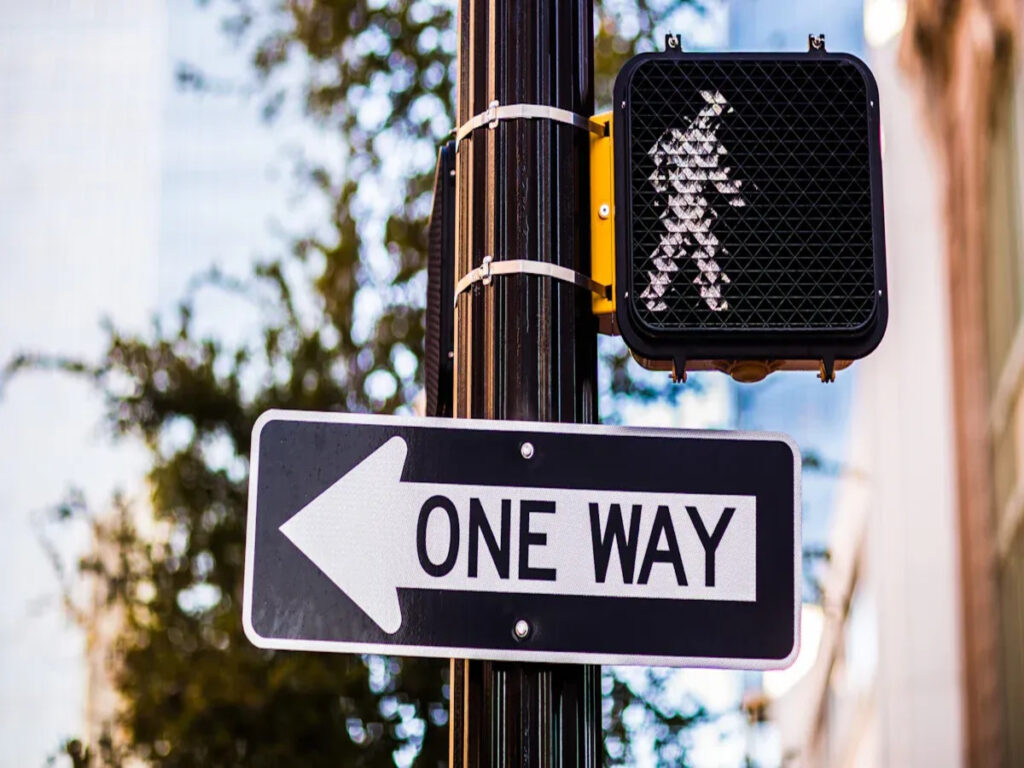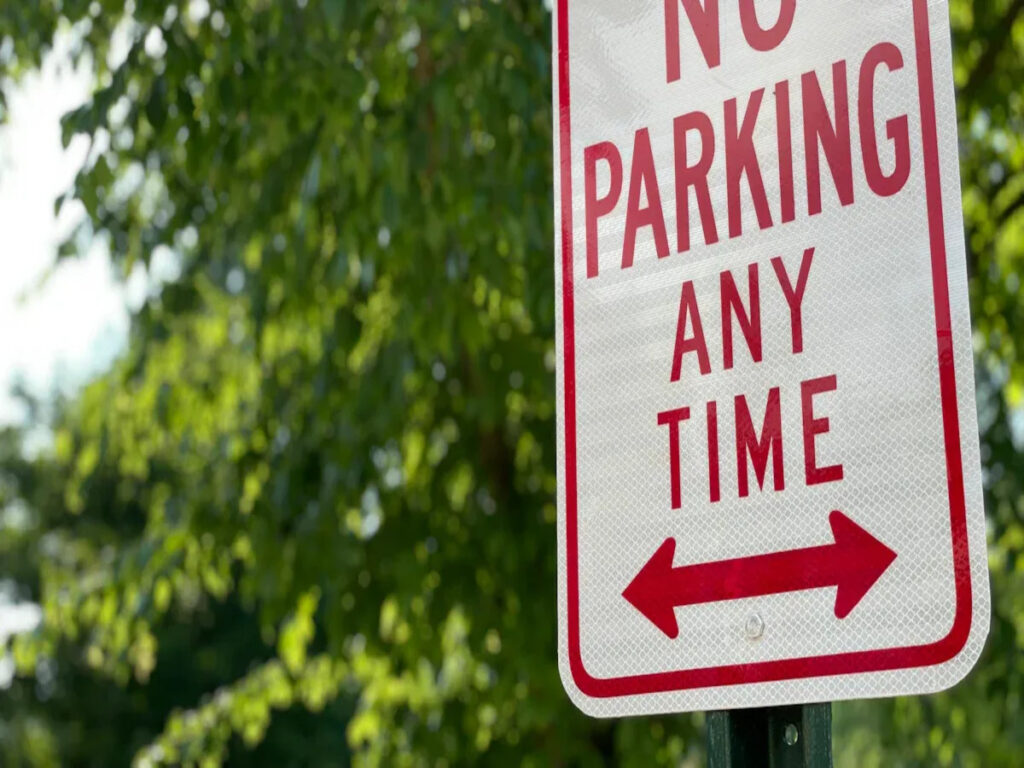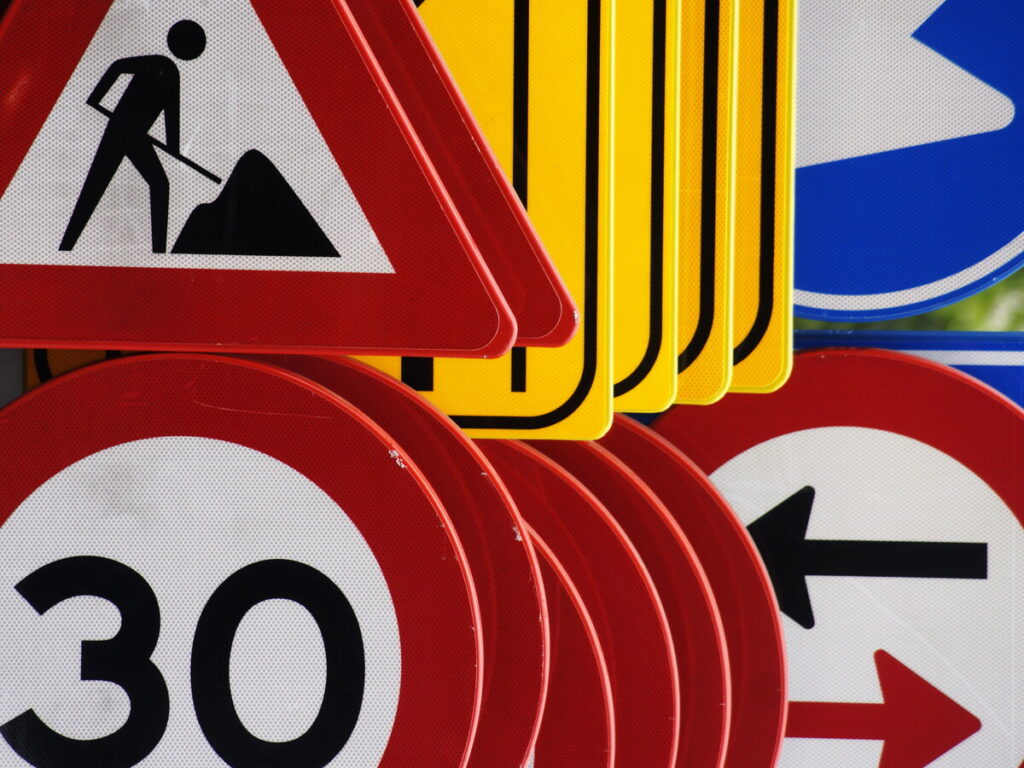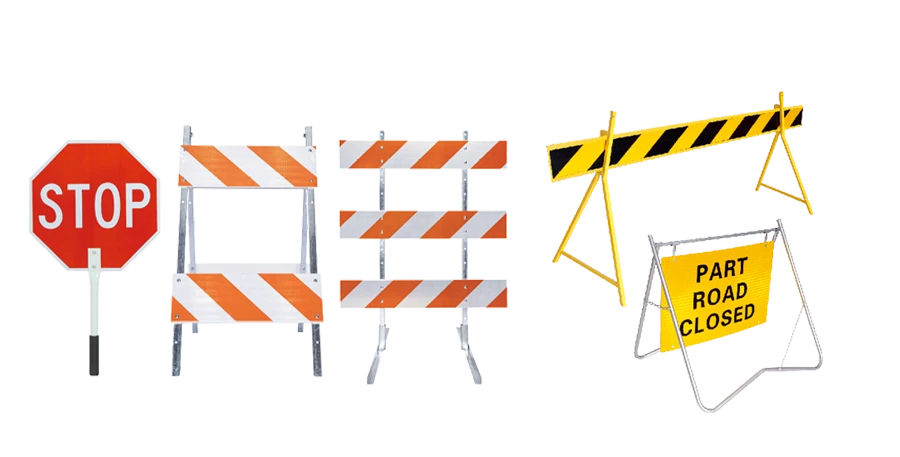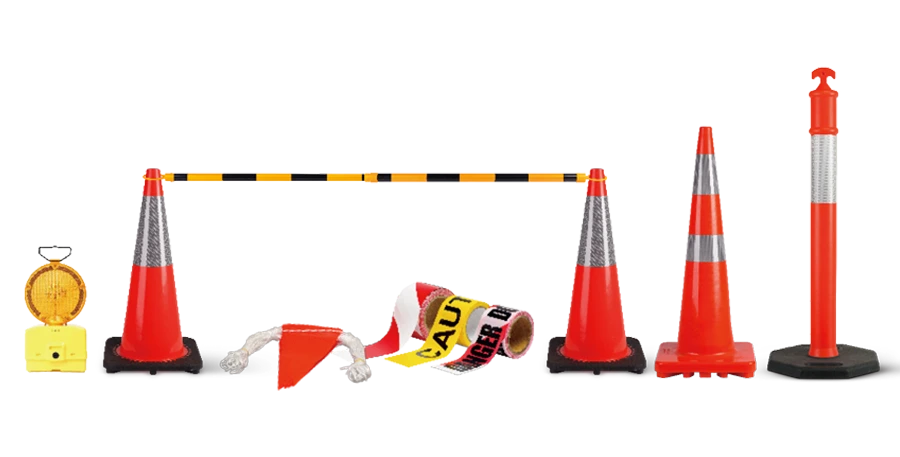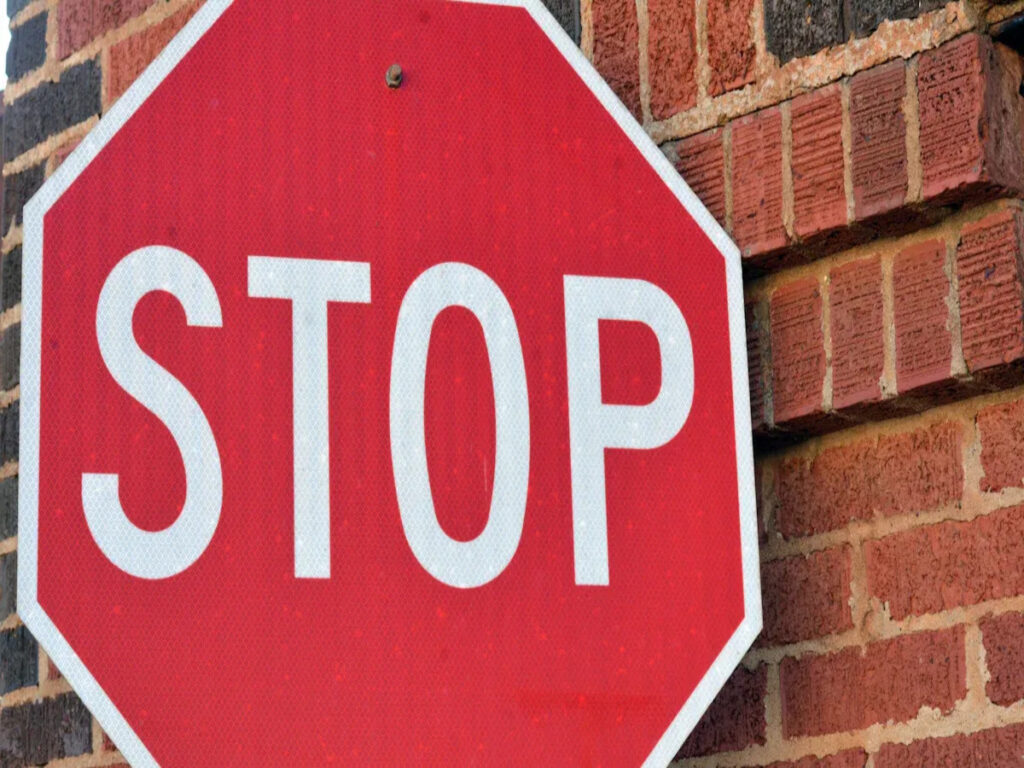
Un panneau d'arrêt avec des points noirs est fabriqué à partir de matériaux difficiles comme l'aluminium ou l'acier. Les fabricants mettent des feuilles de réflexion sur le panneau pour le rendre plus facile à voir à tout moment. Ces matériaux aident le panneau à rester lumineux et facile à lire. Cela aide à assurer la sécurité des gens et soutient la sécurité routière. La surface réfléchissante et les points noirs fonctionnent ensemble pour rendre le signe plus visible pour les conducteurs. Les bons matériaux et la conception intelligente font que le panneau d'arrêt avec des points noirs durera longtemps et donnez des avantages de sécurité clairs. Des panneaux comme ceux-ci sont importants pour garder tout le monde en sécurité sur la route.
Des panneaux comme ceux-ci sont importants pour garder tout le monde en sécurité sur la route. Pour en savoir plus sur la haute qualité panneaux de trafic à vendre qui combinent la durabilité avec la sécurité, visite OPTRAFIC.
Principaux à retenir
- Les panneaux d'arrêt de points noirs sont fabriqués à partir de matériaux difficiles. Ils utilisent l'aluminium de qualité marine ou l'acier galvanisé. Ces matériaux aident les panneaux à résister au mauvais temps. Ils font aussi durer les signes.
- Les feuilles de réflexion prismatique sont utilisées sur les signes. Cela peut être la classe 1W ou le diamant. La feuille rend les signes faciles à voir la nuit. Cela aide également à la pluie ou au brouillard.
- Les points noirs font ressortir le panneau. Ils aident les conducteurs à voir les panneaux d'arrêt rapidement. Ceci est utile en basse lumière, brouillard, ou tôt le matin.
- Les signes doivent être nettoyés souvent de manière douce. Ils devraient également être vérifiés régulièrement. Cela maintient les signes brillants et fonctionne bien pour jusqu'à 15 années.
- Les panneaux d'arrêt doivent suivre les règles nationales et internationales. Cela les maintient en sécurité et facile à lire sur toutes les routes.
Arrêtez le signe avec des points noirs: Matériels
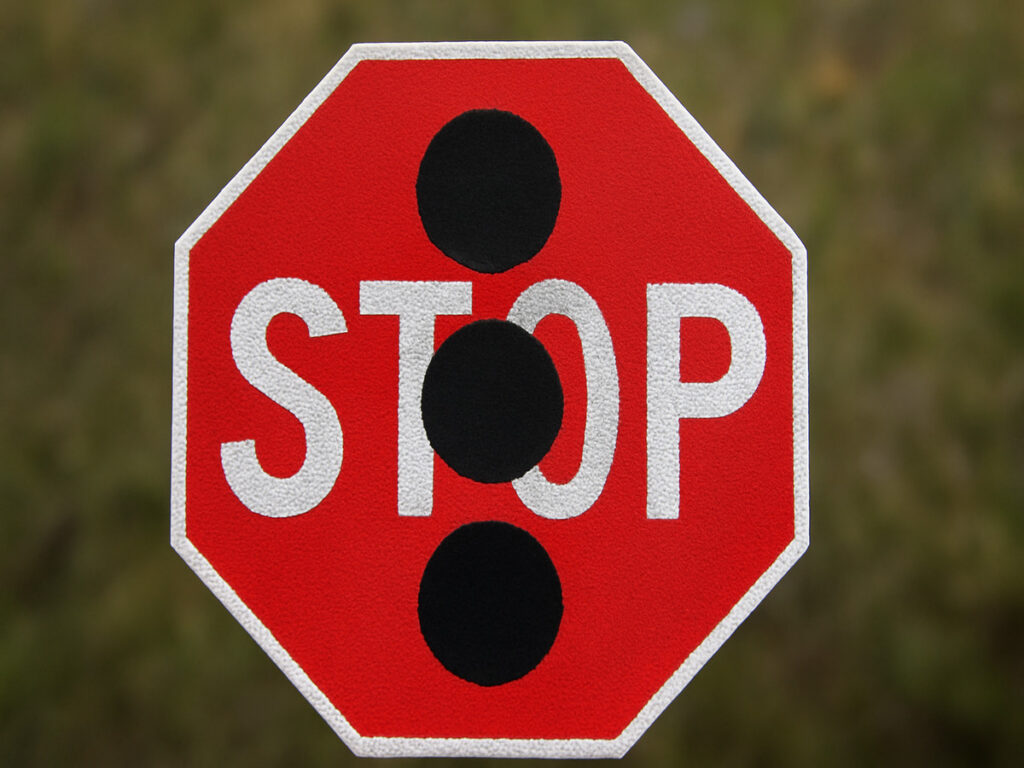
Aluminium vs. Substrats en acier
Les fabricants choisissent entre l'aluminium de qualité marine 5052-H38 et l'acier galvanisé pour un panneau d'arrêt avec des points noirs. L'aluminium ne rouille pas facilement, C'est donc bon pour les endroits humides ou salés. Cela aide le signe durer plus longtemps. L'acier galvanisé est fort et peut bien prendre des coups. Mais les panneaux en acier sont plus lourds, Tellement bouger et les mettre en place est plus difficile.
| Fonctionnalité | 5052-H38 Aluminium | Acier galvanisé |
|---|---|---|
| Résistance à la corrosion | Excellent | Bien |
| Options d'épaisseur | 1.6mm, 2.0mm | 1.6mm, 2.0mm |
| Poids | Lumière | Lourd |
| Recyclabalité | Haut | Haut |
| Utiliser dans les zones côtières | Préféré | Moins courant |
Les panneaux en aluminium sont plus légers, Ils sont donc plus faciles à transporter et à mettre en place. Les conseils choisissent l'aluminium pour des endroits avec beaucoup de pluie ou de sel. Les deux matériaux fonctionnent bien avec les feuilles de réflexion et dernier à l'extérieur.
Types de feuilles de réflexion
Une feuille de réflexion sur un panneau d'arrêt aide les conducteurs à voir le signe mieux. Les fabricants utilisent différents types de feuilles, Et chaque type brille la lumière à sa manière. Les types les plus utilisés sont Classe 1W (grand angle prismatique) et Classe 400 (Grade de diamant). Ces matériaux réfléchissants utilisent des prismes pour renvoyer la lumière aux conducteurs. Cela rend le signe facile à repérer la nuit ou quand il est brumeux.
- Classe 1W et classe 400 La feuille brille très bien et suivez les règles de sécurité.
- Les feuilles prismatiques fonctionnent mieux que les types de perles de verre, Surtout quand il fait sombre.
- Les feuilles de réflexion de grade d'ingénieur ne sont pas assez lumineuses pour des signes importants comme Stop.
Des études montrent que l'utilisation de feuilles plus lumineuses signifie moins de plantages. Par exemple:
- Les numéros de crash ont chuté de 38% à Sioux City après avoir utilisé de meilleurs matériaux réfléchissants.
- Les accidents de nuit sont tombés 4.4% Après avoir fait des panneaux d'arrêt plus lumineux.
Les feuilles de réflexion doivent bien se tenir au panneau et aux pièces du point noir. Les fabricants testent dans quelle mesure les feuilles et l'encre restent en marche pour s'assurer que le panneau dure. Le type de feuille change à quel point le signe est brillant et dur.
Méthodes d'application des points noirs
Des points noirs sur un panneau d'arrêt avec des points noirs sont mis avec une impression spéciale ou des méthodes de film. Il y a deux façons principales:
- Impression numérique directe: Les imprimantes utilisent des encres spéciales pour imprimer des points noirs directement sur la feuille de réflexion. Par ici, Les points sont égaux et au bon endroit.
- Film de superposition: Les fabricants ont coupé des points de vinyle noir et les coller sur le dessus de la feuille de réflexion. Cela fait ressortir les points et colle bien.
Pendant la fabrication, Les travailleurs vérifient que les points sont égaux et alignés. Le type d'encre compte aussi. Les encres certes UV ne s'estompent pas au soleil, et les encres à base de solvant s'en tiennent bien à la feuille.
Note: Des chèques réguliers recherchent des problèmes comme les points de décoloration ou l'encre qui se décolle dans la chaleur. Signes dans des endroits difficiles, comme les déserts ou près de la mer, Besoin d'encres résistantes aux UV et de feuilles solides.
En utilisant des matériaux forts, Bonne feuille de réflexion, Et l'impression de points prudente fait un panneau d'arrêt avec des points noirs faciles à voir. Ces choses aident le panneau à rester brillant et en sécurité pour tout le monde sur la route.
Réflectivité et visibilité
Performance réfléchie la nuit
Les panneaux d'arrêt avec des points noirs utilisent des feuilles de réflexion spéciales. Cela aide les conducteurs à voir le signe la nuit. Le matériau réfléchissant rebondit les phares de voiture aux conducteurs. C'est ce qu'on appelle la rétroreflection. Il permet aux conducteurs de repérer le signe de loin, Même dans l'obscurité. Voir des panneaux la nuit est très important pour la sécurité routière. De nombreux accidents se produisent lorsque les conducteurs manquent les panneaux de circulation.
Feuilles réfléchissantes comme la classe 1W et la classe 400 est très brillant. Ces types utilisent la technologie prismatique pour rendre les signes plus faciles à voir. Les conducteurs peuvent remarquer ces panneaux plus loin. Cela leur donne plus de temps pour réagir. Les panneaux rétroréflectifs restent visibles sous de nombreux angles et distances. Cela aide à contrôler le trafic et à réduire les accidents, Surtout aux traversées occupées.
Conseil: Les conseils choisissent des feuilles de réflexion prismatique pour les panneaux d'arrêt dans les zones animées la nuit. Cela rend les signes plus faciles à voir et maintient les gens plus en sécurité.
Contraste du point noir en basse lumière
Les points noirs sur les panneaux d'arrêt aident les gens à les voir mieux en basse lumière. Cela inclut le brouillard, aube, ou crépuscule. Les points noirs se détachent sur le fond brillant. Les études montrent que les marques sombres comme les points noirs sont plus faciles à repérer dans une faible lumière. Les gens lisent plus rapidement les symboles noirs sur un fond clair que l'inverse. Cela rend le signe plus facile à voir et aide les conducteurs à le remarquer rapidement.
- La recherche montre que les marques noires donnent un meilleur contraste en basse lumière.
- Les conducteurs ont des signes de points noirs plus rapides que les réflexions simples quand il est difficile de voir.
- Les points noirs gardent le signe facile à voir même si les phares ne brillent pas directement dessus.
Les points noirs aident à garder les routes en sécurité en facilitant les panneaux d'arrêt à remarquer par mauvais temps ou à faible luminosité. Une meilleure visibilité de ces points aide à arrêter les arrêts manqués et à rendre le trafic plus sûr.
Normes de rétroréflexité
Les panneaux de signalisation doivent suivre les règles de rétroréflectivité strictes pour rester en sécurité et facile à voir. En Australie, des règles comme COMME 1742, COMME 1743, Et comme 1906 Définissez les normes pour la façon dont les signes réfléchis doivent être.
| Standard | Domaine de mise au point | Exigence clé |
|---|---|---|
| COMME 1742 | Dispositifs de contrôle de la circulation | Visibilité et placement des signes |
| COMME 1743 | Spécifications des panneaux de route | Feuilles réfléchissantes et durabilité |
| COMME 1906 | Matériaux rétroréflectifs | Rétroréflexion et réflexion |
Des études de Burns et Pavelka montrent que Feuille de fluorescente rétrogène Fonctionne mieux que les matériaux normaux en basse lumière. Leurs recherches ont révélé que des signes fluorescents étaient observés plus souvent et avaient une meilleure reconnaissance des couleurs au crépuscule. Par exemple, 96% des conducteurs ont vu des panneaux fluorescents à 100 pieds après le coucher du soleil. Seulement 85% a vu des panneaux standard à cette distance. Ces résultats montrent pourquoi il est important d'utiliser de bons matériaux rétroréflectifs et des points noirs pour une meilleure visibilité et sécurité.
Note: Les conseils doivent vérifier souvent les panneaux d'arrêt. Cela s'assure que les feuilles de réflexion et les points noirs fonctionnent toujours bien et peuvent être vus de loin.
Les panneaux d'arrêt avec des points noirs utilisent une forte feuille de réflexion, rétroréflectivité élevée, et un contraste clair. Cela donne une excellente visibilité nocturne et protège les routes. Suivre les règles nationales et l'utilisation de bons matériaux s'assurez que ces panneaux fonctionnent bien pour le contrôle du trafic et la prévention des accidents.
Durabilité et maintenance
Temps et résistance aux UV
Arrête les panneaux avec des points noirs face au temps difficile tous les jours. Pluie, poussière, Et un soleil fort peut les porter. Les fabricants utilisent des matériaux solides et des feuilles de réflexion spéciales pour protéger les signes. La feuille de réflexion cesse de s'évanouir des rayons ultraviolets. Les encres certes UV aident les points noirs à garder leur couleur pendant des années. Dans des endroits près de la mer ou dans les déserts, Les panneaux doivent gérer le sel, vent, et le sable. Une bonne durabilité signifie que le panneau reste brillant et sûr pendant longtemps.
Nettoyage et entretien
Les conseils nettoient souvent les panneaux de circulation pour les garder faciles à lire. Le nettoyage se produit tous les mois ou tous les quelques mois. Le nettoyeur utilisé est important. Certains nettoyeurs peuvent nuire aux feuilles de réflexion ou faire disparaître les points noirs. Les études montrent que le lavage normal peut affaiblir les matériaux réfléchissants après de nombreux lavages. Le tableau ci-dessous montre comment le nettoyage modifie les feuilles de réflexion:
| Aspect mesuré | Conclusions clés |
|---|---|
| Force de déchirure | Diminué de 32 à 34% après 30 lavages |
| Force de rupture | Dégé de 6,5 à 7% après 15–30 lavages |
| Répulsion de l'eau | Perdu après les lavages conventionnels répétés |
| Changement de couleur | Décoloration et peler après environ 22 lavages |
| Dommages visuels | Détachement de pelage et d'étiquette vu après de nombreux lavages |
Note: L'utilisation de nettoyeurs doux et de chiffons doux aide les feuilles de réflexion et les points noirs durent plus longtemps. Les conseils vérifient les panneaux pour la décoloration ou le pelage pendant l'entretien régulier.
Durée de vie et de remplacement
Les panneaux de signalisation doivent rester clairs et sûrs pendant toute leur vie. La plupart des conseils modifient les signes lorsque les couleurs s'estompent ou que la rétroréflectivité devient trop faible. Le Fhwa suggère quelques façons de remplacer les signes: par âge, par région, ou en vérifiant les échantillons pour l'usure. De nouvelles études montrent que les panneaux d'arrêt de réflexion rouge peuvent durer 10 à 15 ans, selon où ils sont. Certains signes durent plus longtemps s'ils sont bien soignés. Les conseils prévoient quand remplacer les panneaux pour assurer la sécurité des routes et les coûts de contrôle.
Panneaux de trafic réfléchissants: Comparaison
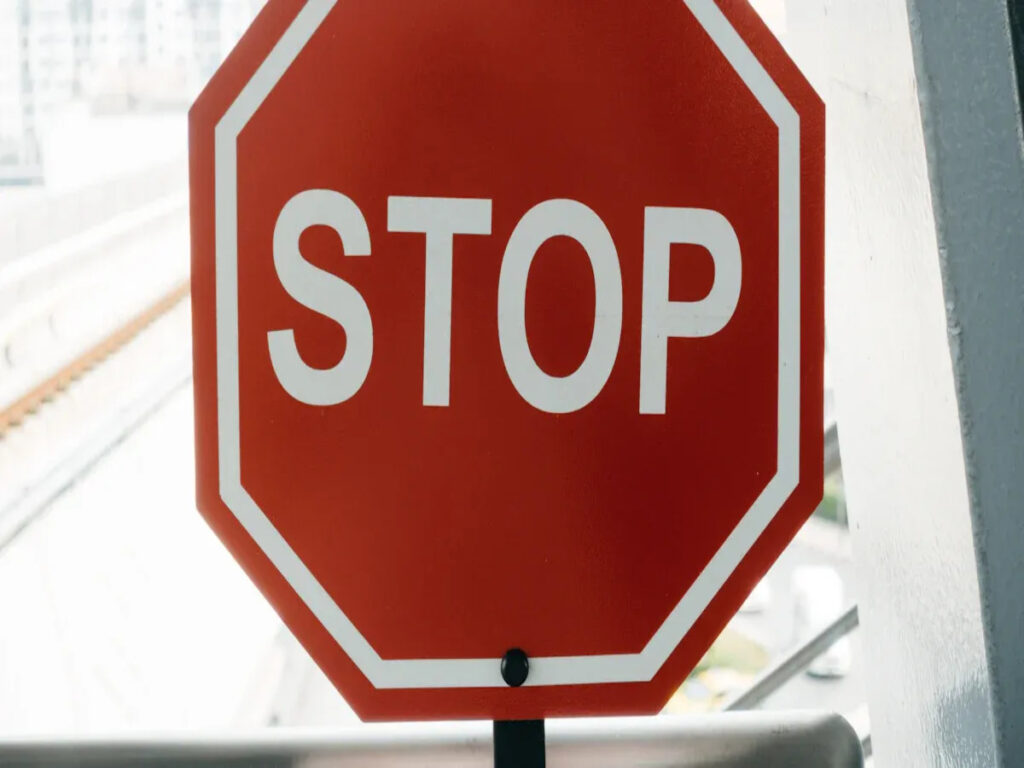
Standard vs. Signes d'arrêt du point noir
Les panneaux de trafic réfléchissants standard ont des arrière-plans lumineux et des lettres claires. Les panneaux d'arrêt de point noir ont des points noirs pour un contraste supplémentaire. Cela aide les conducteurs à voir le signe plus rapidement, Même quand il fait sombre ou brumeux. Les deux types utilisent de forts matériaux réfléchissants. Les fabricants utilisent l'aluminium ou l'acier pour la base. Ils mettent des feuilles prismatiques sur le dessus. Les signes de points noirs ont besoin d'une étape de plus pour faire. Les travailleurs impriment ou collent sur les points noirs après la couche réfléchissante. Cette étape prend un peu plus de temps et coûte un peu plus. Les deux types suivent des règles strictes MUTCD et ASTM pour la sécurité routière. Les panneaux d'arrêt de points noirs sont plus faciles à repérer dans le brouillard ou tôt le matin.
Coût et installation
Les signes réfléchissants de points noirs coûtent un peu plus que ceux standard. L'étape supplémentaire pour les points noirs augmente le prix. Les conseils pensent que la meilleure visibilité vaut le coût supplémentaire. Les panneaux en aluminium sont plus légers et plus faciles à installer. Les panneaux en acier sont plus lourds mais peuvent prendre plus de coups. Les deux types utilisent les mêmes pièces de montage. Les travailleurs peuvent les mettre avec des outils normaux. La différence de prix est faible par rapport aux avantages de sécurité. Les conseils choisissent souvent des panneaux de points noirs pour des routes ou des endroits animés qui sont difficiles à voir.
Conformité réglementaire
Les groupes de réglementation définissent des règles claires pour les panneaux de trafic réfléchissants. Au Royaume-Uni, Tsrgd et bs un 12899-1 Guide comment les signes sont fabriqués et utilisés. L'Australie utilise comme 1742.2 Et AS / NZS 1906 Pour ses règles. Ces normes correspondent aux règles internationales comme MUTCD et ASTM. Le tableau ci-dessous répertorie les principaux documents pour chaque pays:
| Juridiction | Documents réglementaires clés | Rôle dans les exigences de conformité pour les panneaux de trafic réfléchissants |
|---|---|---|
| Royaume-Uni | Tsrgd, Loi sur les autoroutes 1980, Lignes directrices DFT, BS One 12899-1 | Établit des règles de conception, placement, soins, et les matériaux réfléchissants pour garder les signes sûrs et faciles à voir |
| Australie | COMME 1742.2, AS / NZS 1906, Standards Australie, Autorités de la route de l'État et du territoire | Donne des règles de conception, placement, Types de feuilles, et se soucier, Normes internationales correspondantes |
- Les règles australiennes correspondent aux directives mondiales comme MUTCD et ASTM.
- Les groupes routiers d'État tels que Transport for NSW et Vicroads s'assurent que les règles sont suivies.
- Standards Australia met à jour les principales règles pour les signes réfléchissants.
- Les conseils et les inspecteurs locaux vérifient les panneaux pour les garder en sécurité et légaux.
Panneaux de trafic réfléchissants, avec ou sans points noirs, doit suivre ces règles strictes. Cela maintient les signes brillants, fort, Et sans danger pour tout le monde sur la route.
Les panneaux d'arrêt avec des points noirs sont les plus faciles à voir et au plus long lorsque les conseils utilisent des feuilles de qualité diamant et de l'aluminium de qualité marine. Ces documents suivent les règles MUTCD et ASTM. Ils aident à garder les routes en sécurité pendant longtemps et les numéros de crash inférieurs. Les feuilles prismatiques aident tous les conducteurs à mieux voir le signe, Même la nuit ou par mauvais temps. Les conseils doivent souvent vérifier les signes, Nettoyez-les dans le bon sens, Et échangez-les s'ils deviennent trop difficiles à voir pour les règles MUTCD ou ASTM. L'utilisation de nouvelles technologies réfléchissantes maintient tout le monde en sécurité et aide chaque communauté à rester en sécurité sur les routes.
FAQ
Ce qui rend les panneaux d'arrêt de point noir différent des panneaux d'arrêt standard?
Les panneaux d'arrêt de points noirs utilisent des points noirs supplémentaires pour un contraste plus élevé. Ces points aident les conducteurs à voir le signe plus clairement dans le brouillard, pluie, ou basse lumière. Les panneaux d'arrêt standard n'ont pas cette fonctionnalité ajoutée.
Combien de temps durent les panneaux d'arrêt du point noir?
La plupart des panneaux d'arrêt de point noir en dernier 10 à 15 années. La durée de vie dépend des matériaux utilisés et du temps local. Le nettoyage et les inspections régulières aident les panneaux à rester lumineux et efficaces.
Les conseils peuvent-ils recycler les anciens panneaux d'arrêt de points noirs?
Oui, Les conseils peuvent recycler les panneaux en aluminium et en acier. De nombreux centres de recyclage acceptent ces matériaux. La suppression de la feuille de réflexion avant le recyclage aide le processus.
Pourquoi les conseils choisissent-ils des feuilles de réflexion prismatique?
La feuille de réflexion prismatique reflète la lumière mieux que les anciens types de perles de verre. Cette feuille aide les conducteurs à voir le signe sous plus d'angles et de distances. Les conseils l'utilisent pour améliorer la sécurité routière, surtout la nuit.
Comment les conseils pour nettoyer les panneaux d'arrêt des points noirs devraient-ils?
Les conseils doivent utiliser des chiffons doux et des nettoyeurs doux. Des produits chimiques durs ou des brosses rugueuses peuvent endommager la surface réfléchissante et les points noirs. Le nettoyage régulier maintient le panneau visible et prolonge sa durée de vie.

